by Giorgio
Busetto
|
click on images to enlarge
SALT CELLARS FROM GENOA
AND GENOA SILVER HALLMARKS
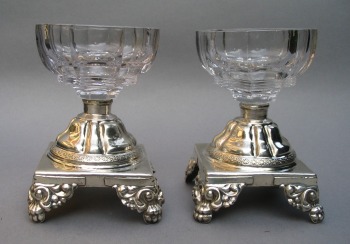 |
"Torretta" is the term used for 18th century
silver made in Genoa (Italy). The quality of their
workmanship and their rarity make "torretta" pieces
sought after and costly items for serious collectors.
These Genoese salt cellars aren't "torretta" silver
as they were made in the 19th century and bear the
"cross of St. Maurice and St. Lazarus" and the "dolphin"
marks used in Genoa by the Kingdom of Sardinia from
1824 to 1872.
Anyway they are an excellent example of early 19th
century Italian cut-glass salt cellars. The embossed
and chiselled square base stands on four floral 'paws'
feet while the short gadrooned stem supports the
cut-crystal bowl.
Unfortunately the maker's mark "B.N. into a
rectangle" belongs to an unidentified silversmith.
The salt cellars are 4 in (cm. 10) high and the
bowl's diameter is 2 3/4 inches (cm. 7) wide.
A similar pair of salts is illustrated by Gianna
Roccatagliata in her reference book Argenti
Genovesi.
|
GENOA SILVER MARKS
The " Guild of Silversmiths" (Corporazione dei Fraveghi)
was active in Genoa since 1248 but the most ancient silver
bearing the "torretta" mark is the mid 15th century pyx of
Meglio's (Genoa) Parish.
"Torretta" is the definition adopted, possibly in the 19th
century, by antique dealers and collector to identify the
ancient mark of Genoese silver
The shape of the "torretta" mark had relevant modification
during the many centuries of its use and represents, in stylized
form, the town of Genoa protected by its "castrum" (castle:
better identifiable in ancient Genoese gold coins, the
"doppia").
After French invasion of Genoa, French silver marks were
introduced in 1805, replaced, after Napoleon's fall, by Kingdom
of Sardinia marks in 1815.
Anyway, "Torretta" continued to be used by Genoa Assay Office
during the French domination and also after the annexing to the
Kingdom of Sardinia until 1824.
After 1824 the "Eagle" (950/1000 fineness mark of Kingdom of
Sardinia) or the "Cross of St. Maurice and Lazarus" (800/1000
fineness mark) and the "dolphin" (mark of Genoa Assay Office)
continued to be used until the adoption of Kingdom of Italy
marks in 1872.
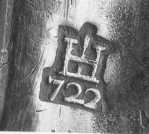 |
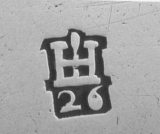 |
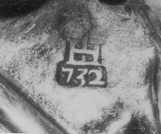 |
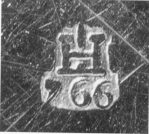 |
Torretta mark 1722
|
Torretta mark 1726
|
Torretta mark 1732
|
Torretta mark 1766
|
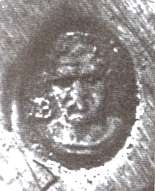 |
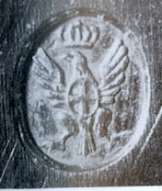 |
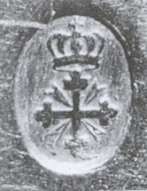 |
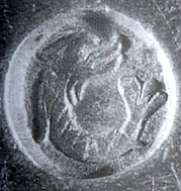 |
Genoa French Département
mark 1805/1808
|
Kingdom of Sardinia
950/1000 silver mark 1824/1872
|
Kingdom of Sardinia
800/1000 silver mark 1824/1872
|
Kingdom of Sardinia Genoa
Assay Office silver mark 1824/1872
|
BASIC BIBLIOGRAPHY FOR GENOA SILVER AND ITS MARKS
Argenti Italiani del Settecento, V.Donaver-R.Dabbene, Edizioni
Libreria Malavasi, Milano, 2000
Argenti Italiani dell'Ottocento, vol. 1, V.Donaver-R.Dabbene,
Edizioni Libreria Malavasi, Milano, 2001
Argenti Sabaudi Genova, Farida Simonetti, SAGEP Editrice,
Genova, 1993,
I Marchi dell'Argenteria Italiana, Ugo Donati, De Agostini,
Novara, 1993,
Argenti Genovesi, Gianna Roccatagliata, De Ferrari & Devega,
Genova, 2002,
L'Argenteria Genovese del Settecento, Franco Boggero-Farida
Simonetti, Umberto Allemandi & C., Torino, 2007,
Argenti Genovesi La Torretta, Gianna Roccatagliata, Tormena
Editore, 1992,
|
Giorgio Busetto
- 2008 -
|
|
 ASSOCIATION OF SMALL COLLECTORS OF ANTIQUE SILVER
ASSOCIATION OF SMALL COLLECTORS OF ANTIQUE SILVER ASSOCIATION OF SMALL COLLECTORS OF ANTIQUE SILVER
ASSOCIATION OF SMALL COLLECTORS OF ANTIQUE SILVER